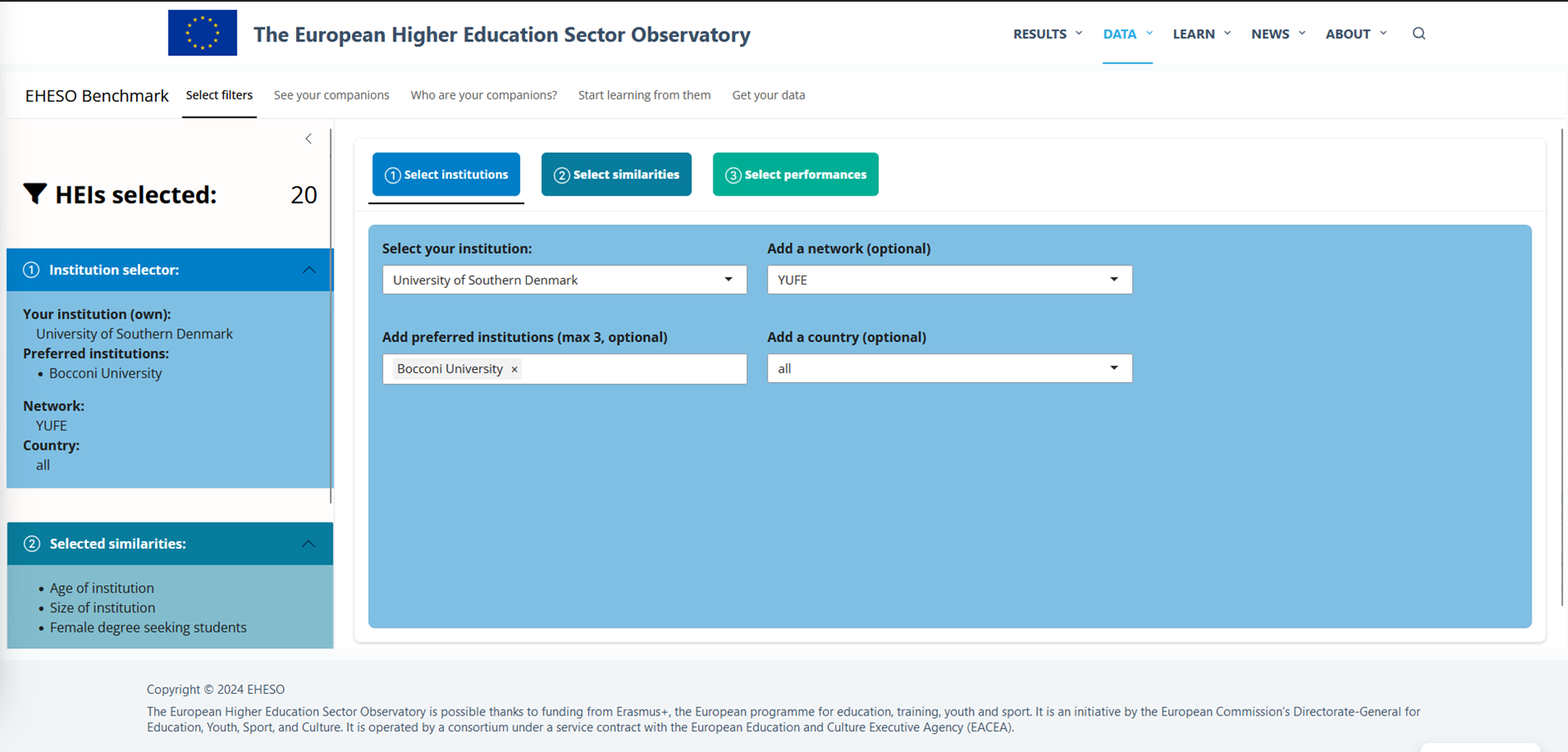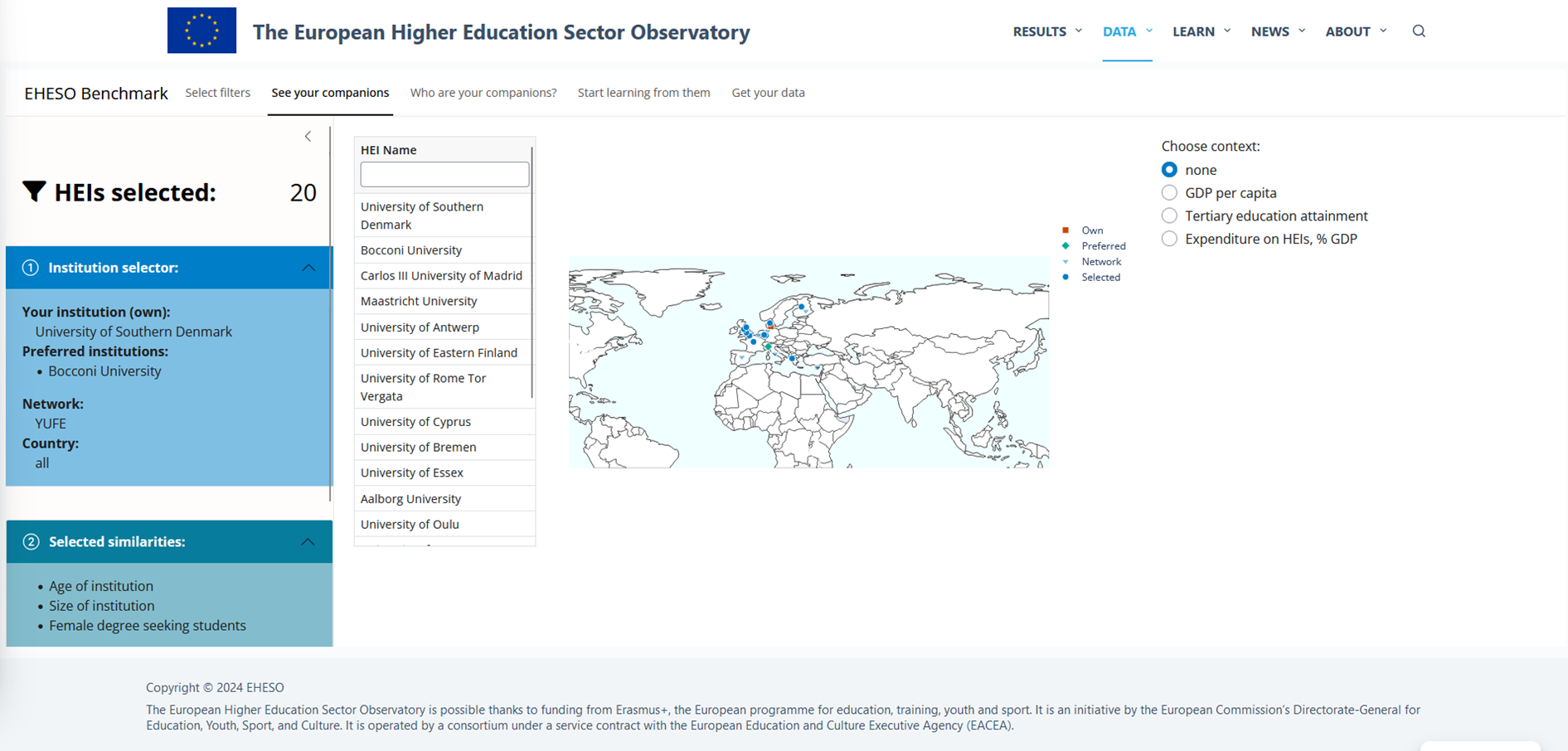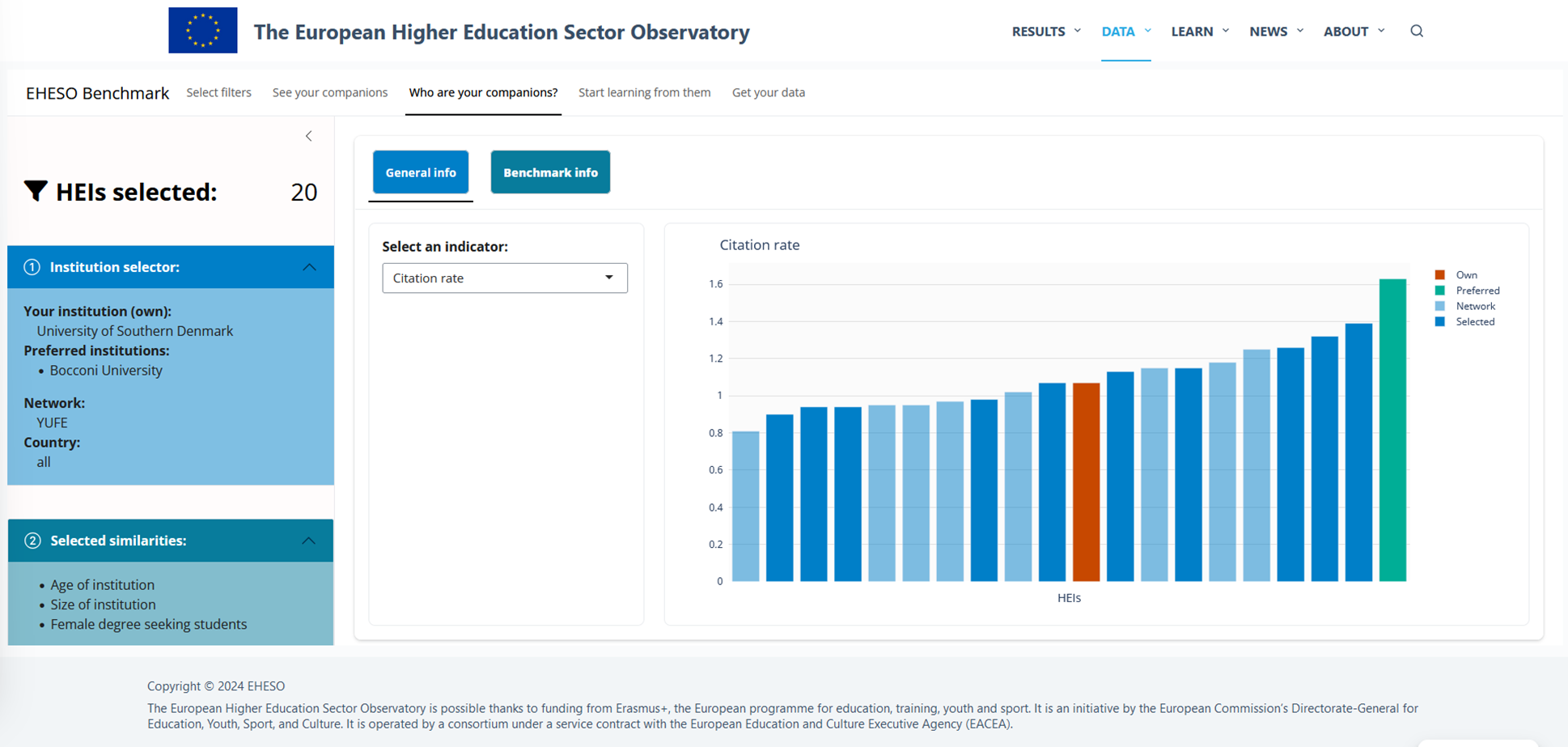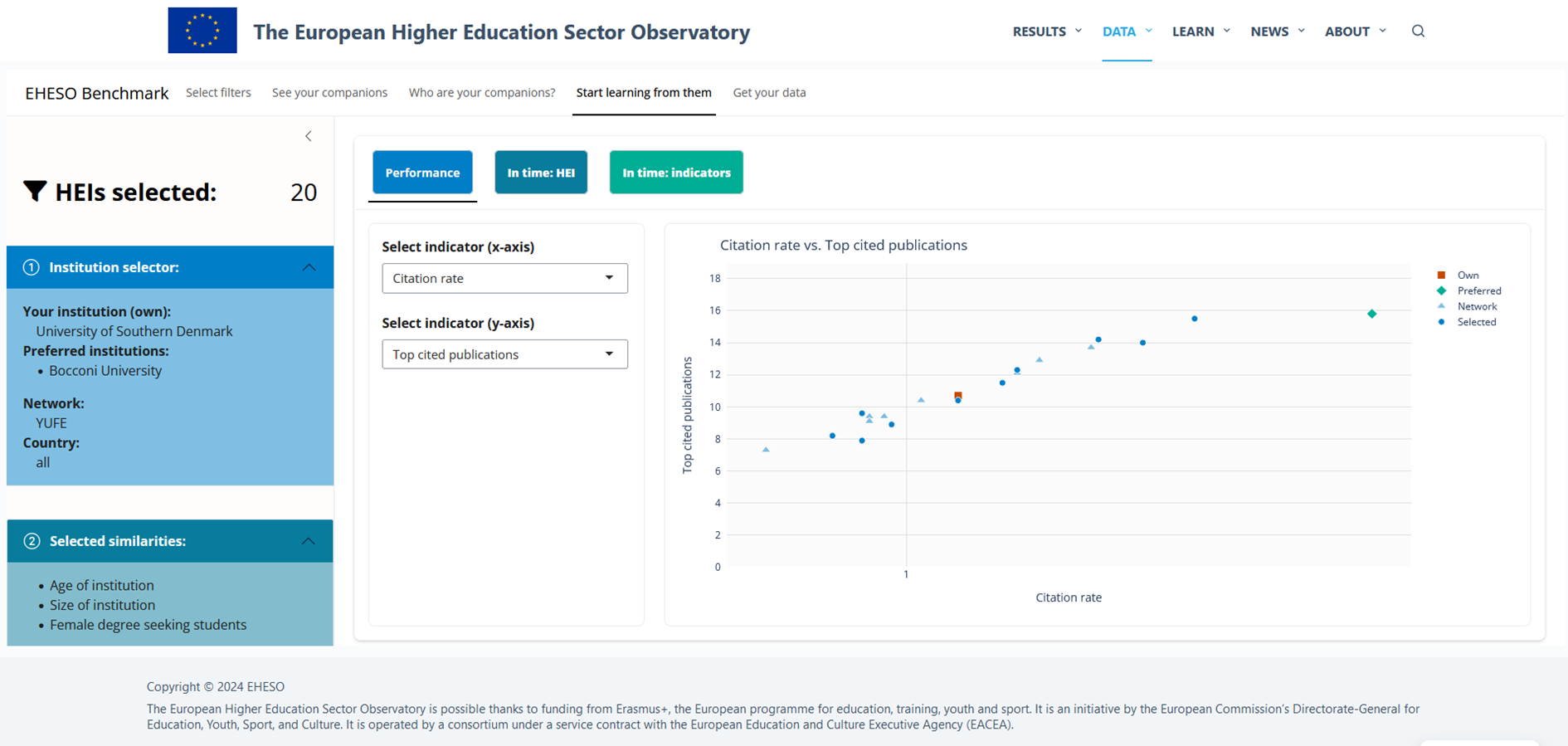How to use the benchmarking tool to compare performances?
The EHESO benchmarking tool is developed from a cooperative perspective (how can institutions learn from each other) and not from a competitive perspective (like the league tables). It allows you to identify relevant higher education institutions that your institution may learn from to improve its performance. Finding peer institutions can be a challenge. The benchmarking tool provides you with an intuitive user interface that guides you through this journey.
The first step is to select your own institution (or the institution that wants to learn from its peers. In the “select filters’ tab you’ll find several options to compose a set of benchmark institutions (select specific institutions, select institutions with similar general characteristics and select institutions that perform slightly better than your (focal) institution). The size of this set and the choices made are displayed to the left.
Step 1: Select your benchmarks

The second step is to find out what institutions are in your selection (tab ‘See your companions’). what are their names and where they are located. You may add some basic country level background information to the map.
Step 2: See your benchmarks

In step three (tab ‘Who are your companions?’) you may start analysing the selection by comparing the scores on single indicators or bivariate plots.
Step 3: Check out your benchmarks

The core part of the benchmarking tool is step 4 where you start learning from the benchmarking institutions. You can check where your (focal) institution is positioned, who is doing better and how the scores on different dimensions of performance are related. There is also the option to compare the scores through time (one indicator and multiple institutions or one institution and multiple indicators).
Step 4: Learn from your benchmarks

All graphs can be easily saved for use in further reporting. If we want to use the data for further analyses, you may also download the data.
The benchmarking tool is designed to give its user a good starting point in the benchmarking process. All data are aligned and verified so users may select, compare and analyse without much effort. It is the basis for the crucial question why particular institutions perform better at certain activities. More in-depth analyses of the organizational structures and institutional policies are needed to learn and improve. The benchmarking tool can help the user to get on its way.
